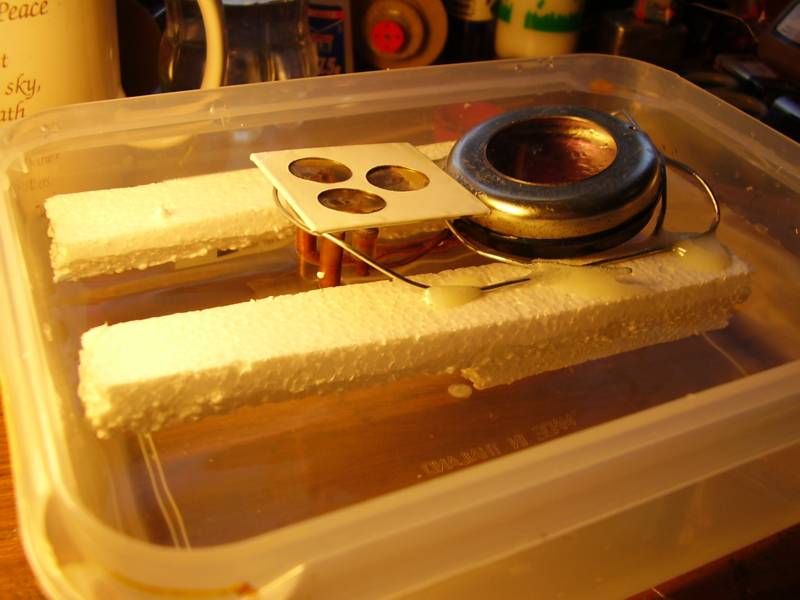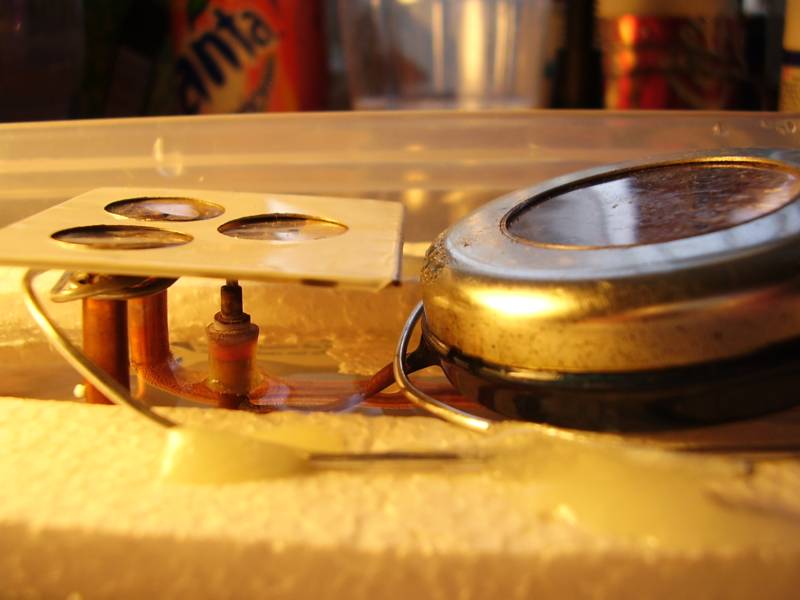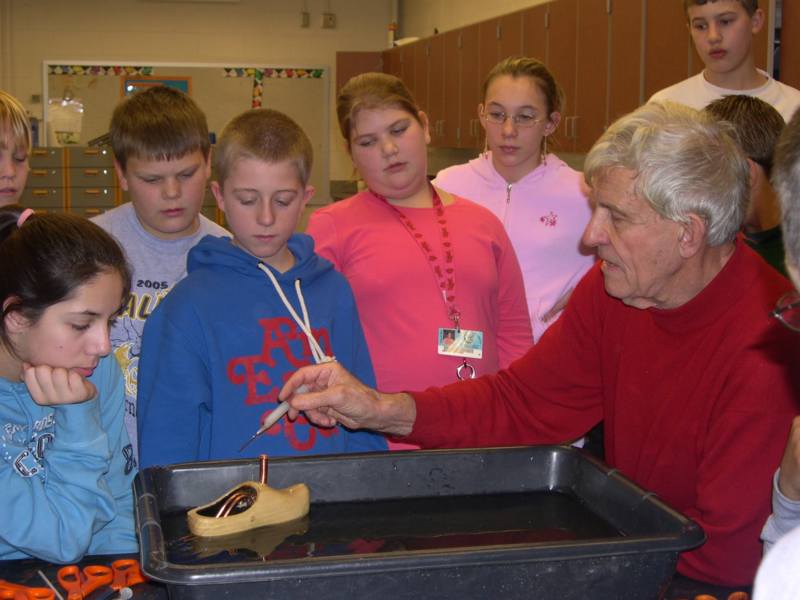
Guus Flogel demonstrates one of his wooden shoe pop-pop boats.
How to make a pop-pop boat
Simple toy submarine. Attach motor and battery holder to bit of styrofoam using rubber bands; break off bits of styrofoam to neutralise buoyancy. Small and cheap enough to introduce to a public swimming pool clandestinely.

Propellor quite easy to make using small bits of plastic packaging glued to a plastic bush. Shape and dimensions surprisingly un-critical. Make it about 15mm diameter. If done in a school play 'sub hunt': line everyone up along the edge of the pool, throw submarines into pool with motors running, shout "go", when anyone catches one they bring it to you whereupon you throw it into an empty area of the pool.
If two batteries are used, the sub goes much faster but stability becomes a problem. This design is stable even though it only has one propellor.
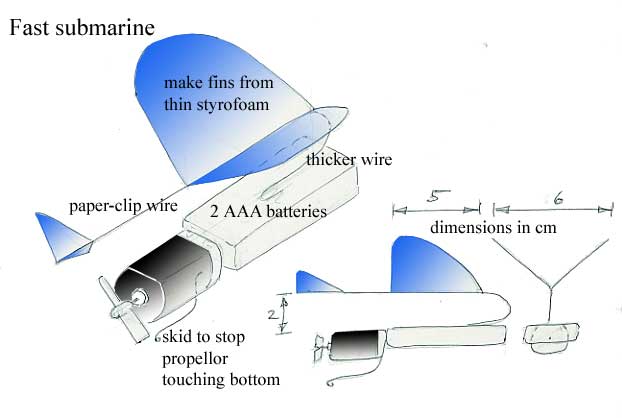
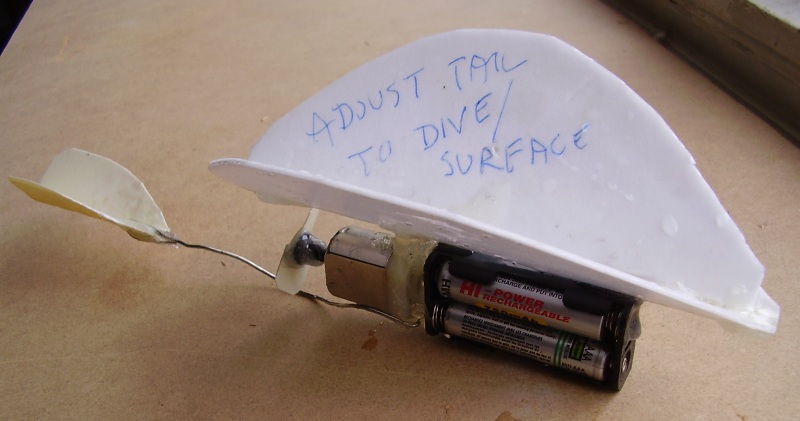
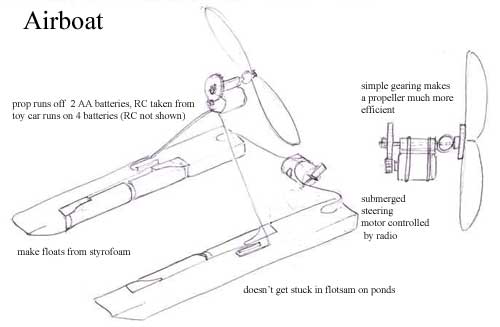
This is a toy airboat, it uses the submarine ideas.
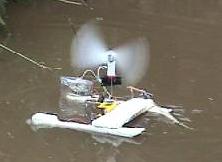
This is another radio controlled version, the fan can be rotated through 360 degrees, this makes it very manouverable, also nothing essential goes below the water line, so it doesn't get caught on weeds.
Link to movie of airboat
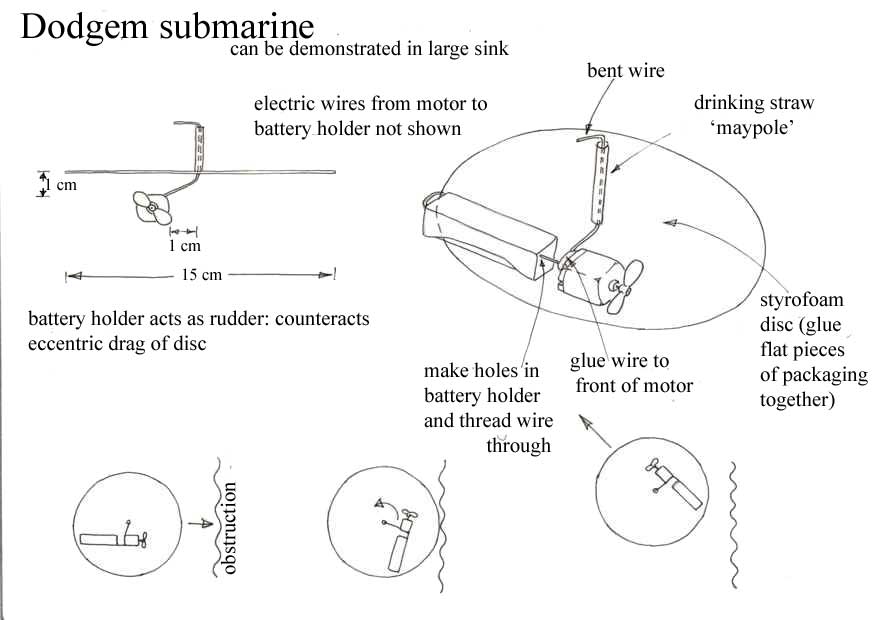
This is a version of the toy submarine that automatically avoids obstacles.
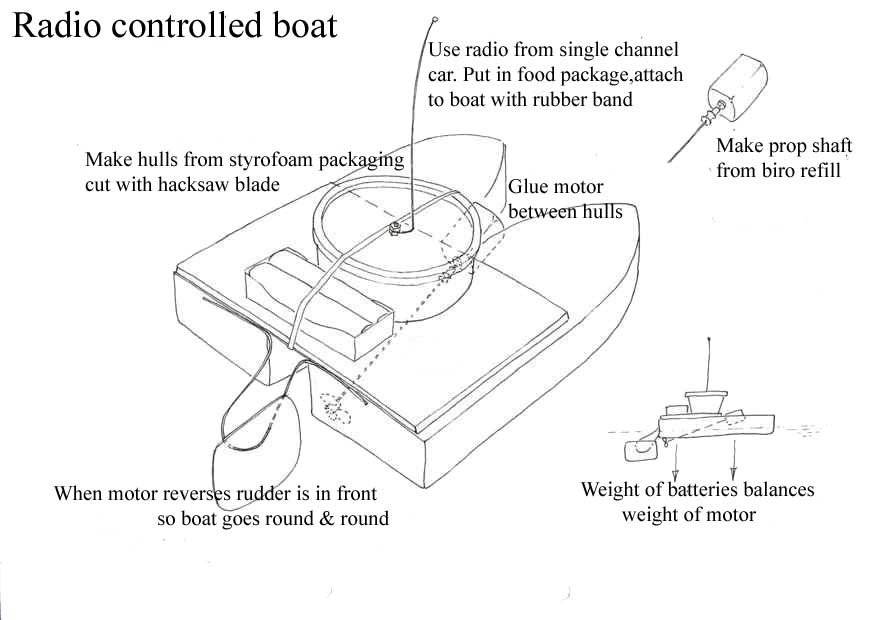
This is a very simple radio controlled boat, it uses the radio from a single channel car; it has the disadvantage that you have to reverse in order to steer.
how to make a putt-putt boat; difficult but very highly recommended
Here we see a potentially dangerous impasse between a duck & a putt-putt boat
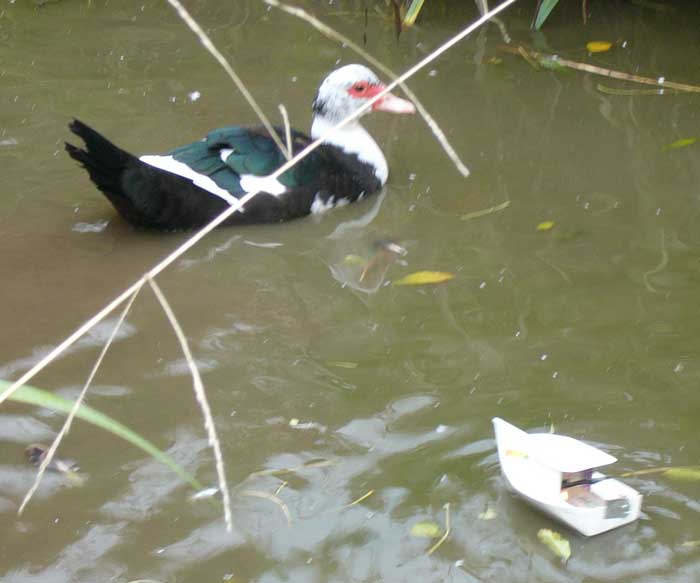
This one has two engines side-by-side, boat just made from bit of styrofoam; foil insulation on top of boiler. Each engine has 2 straws, one half the length of the other.
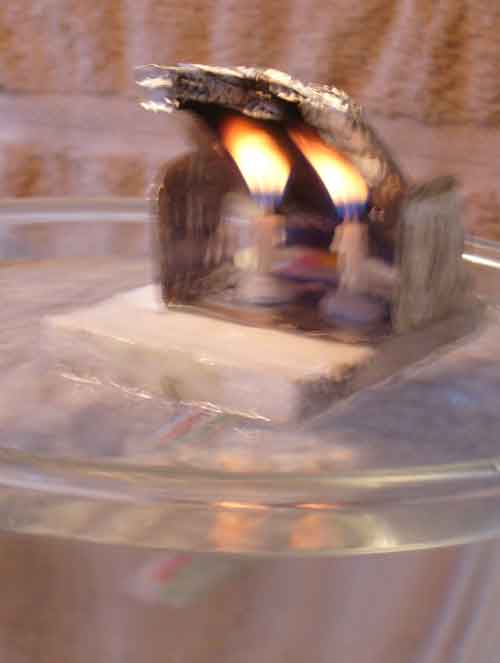
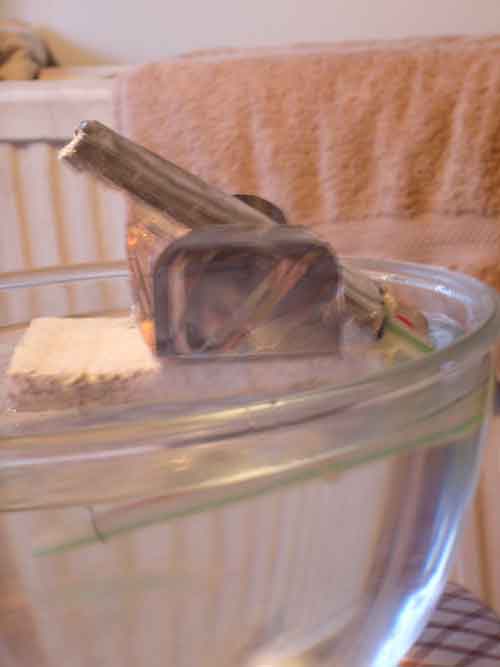
simplified pop-pop design
This is slater harrison's design, simplified to use less glue & dexterity.
Cut ends off coke can, fold round ruler
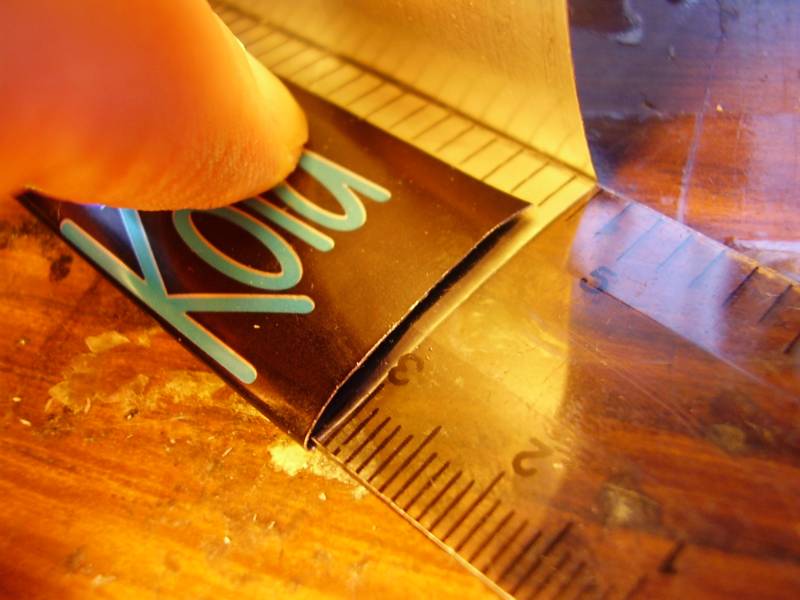
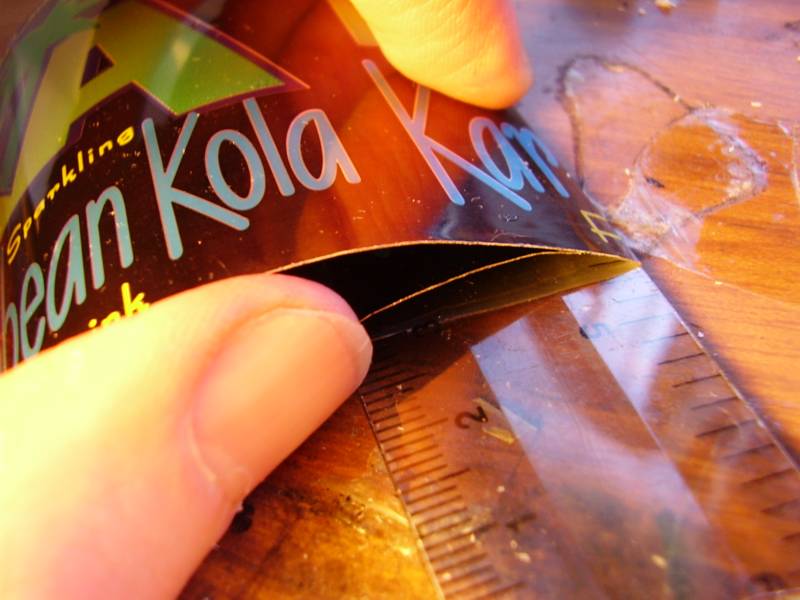
trim off excess
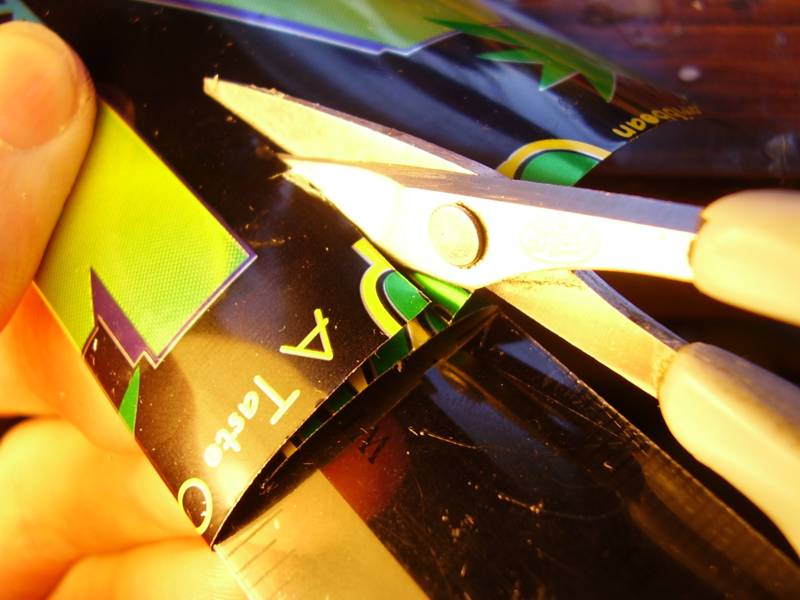
bead of araldite
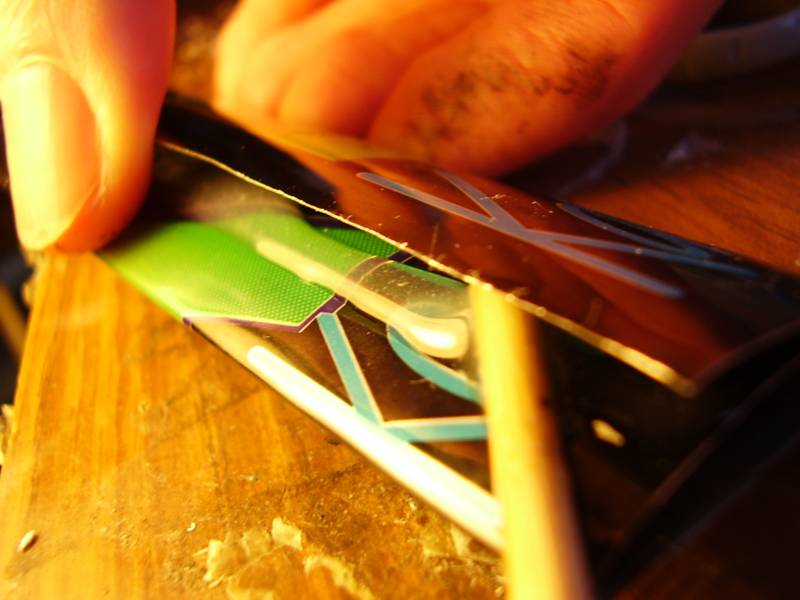
sellotape while glue sets
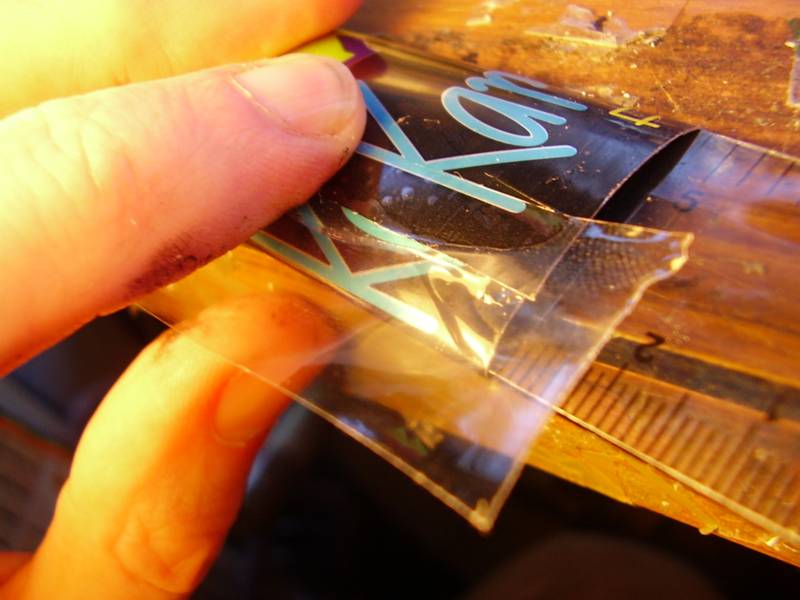
araldite in end
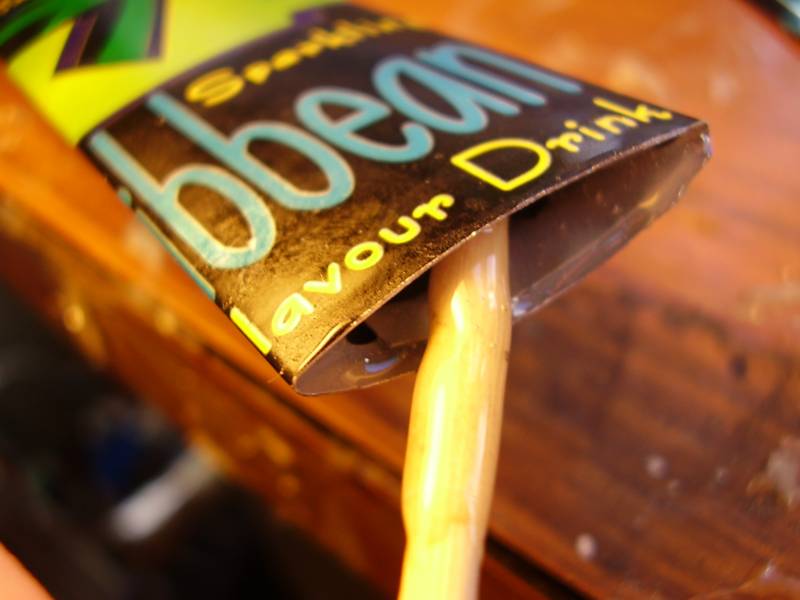
crimp with pliers or vice
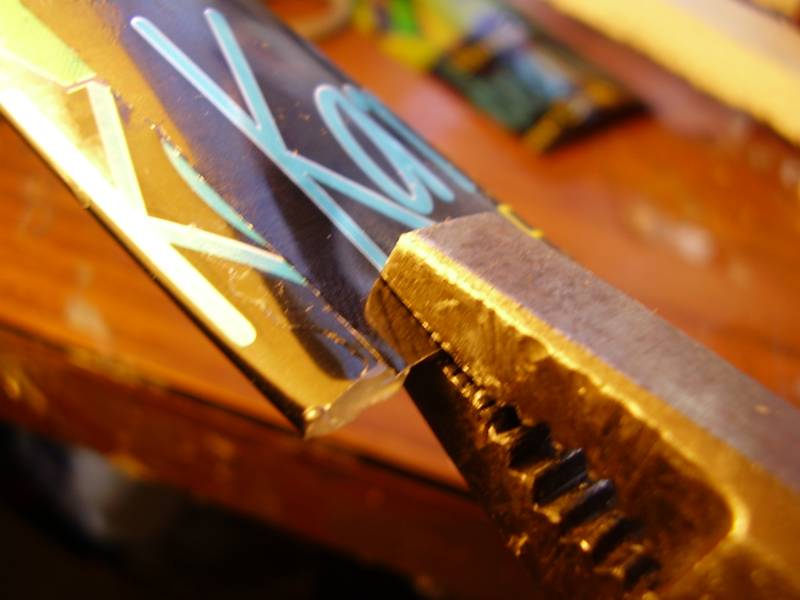
fold over & crimp again
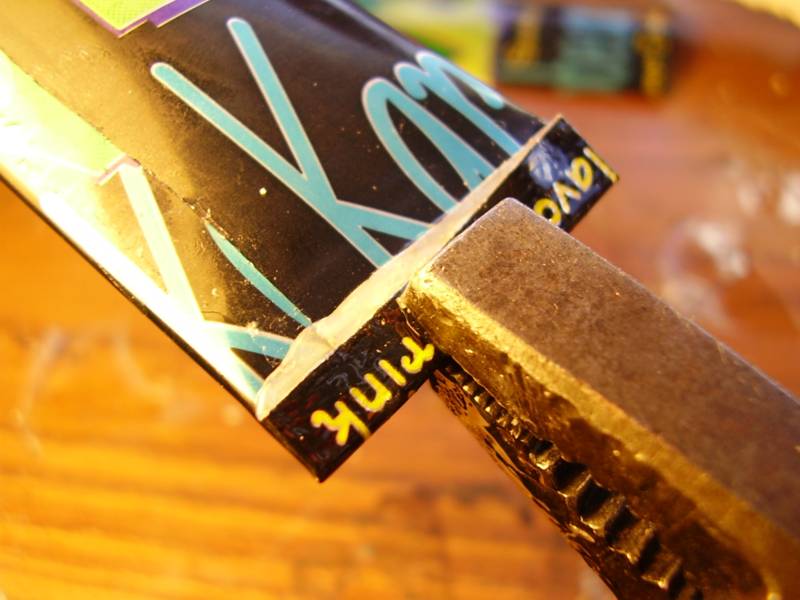
straws in other end

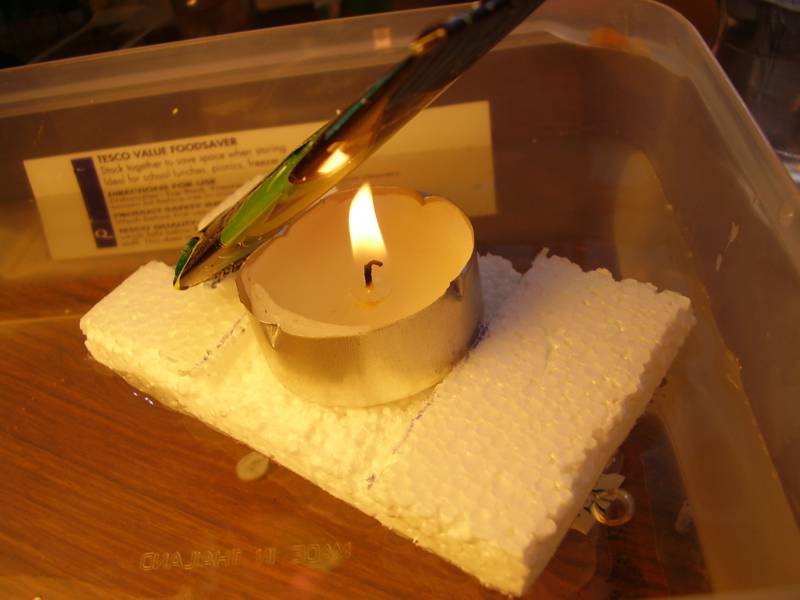
link to instructions for simpler pop-pop engine
how a pop-pop engine works
by jeff bindon





















